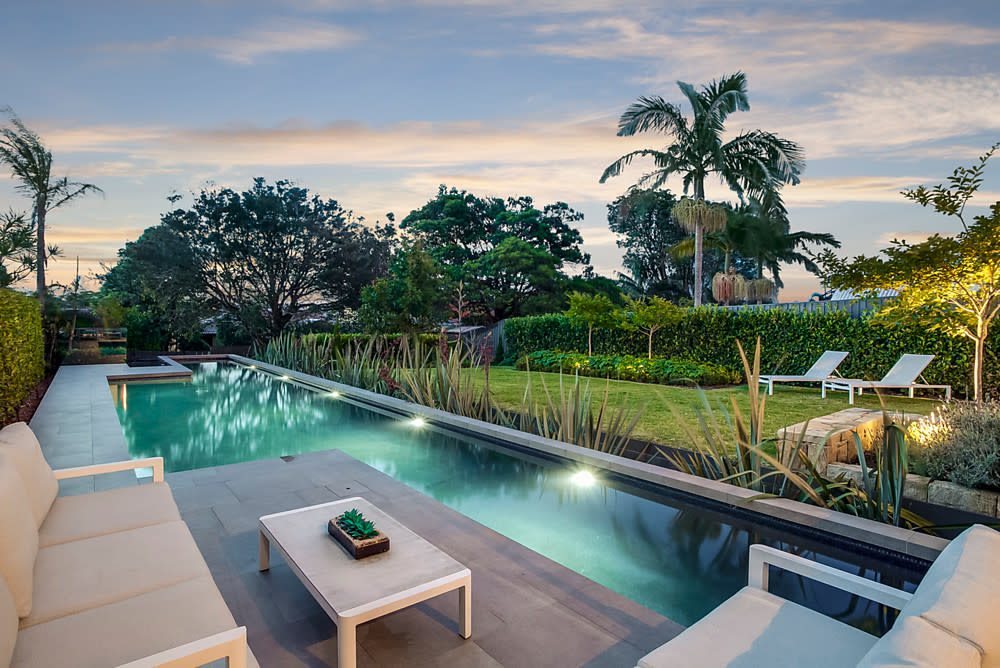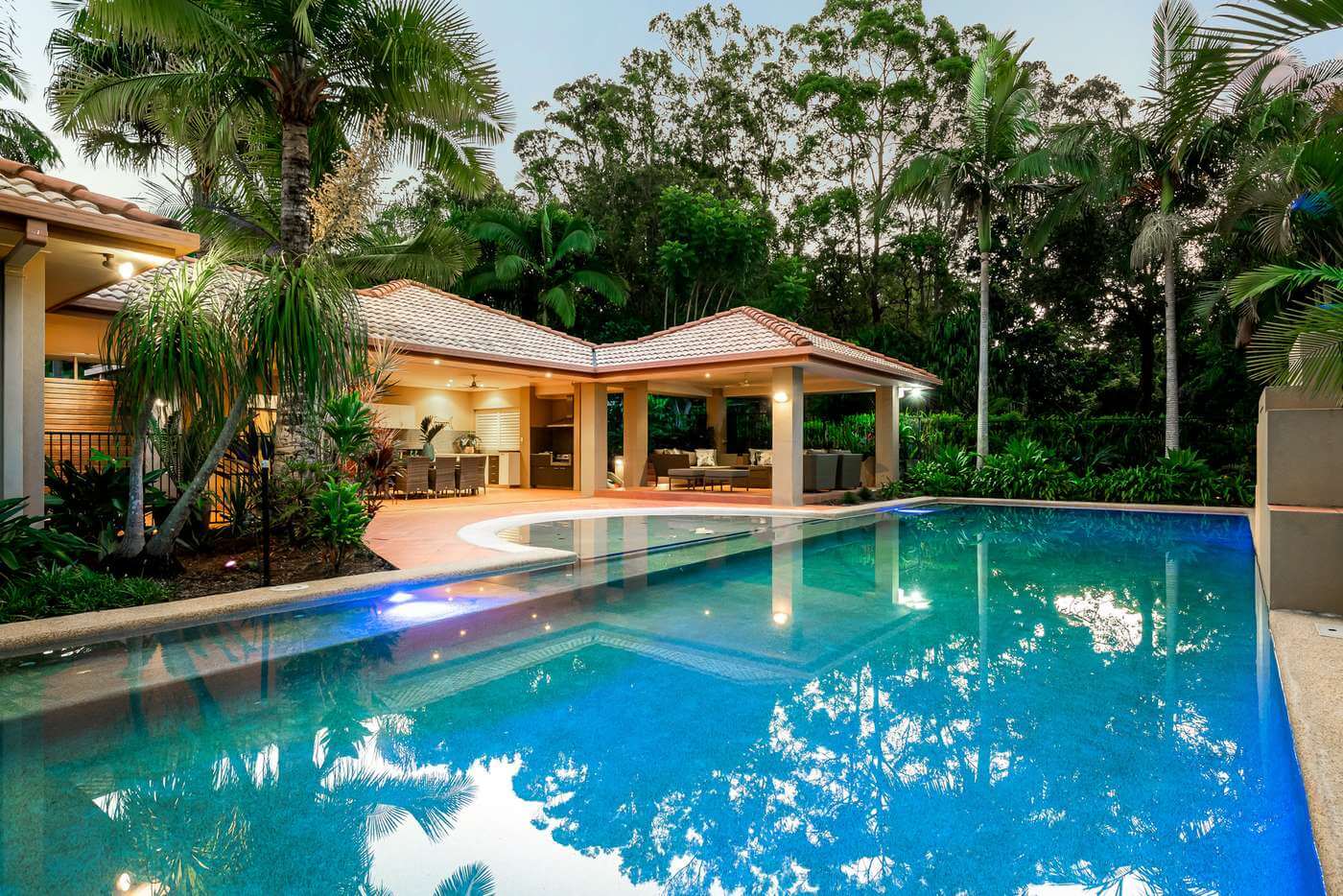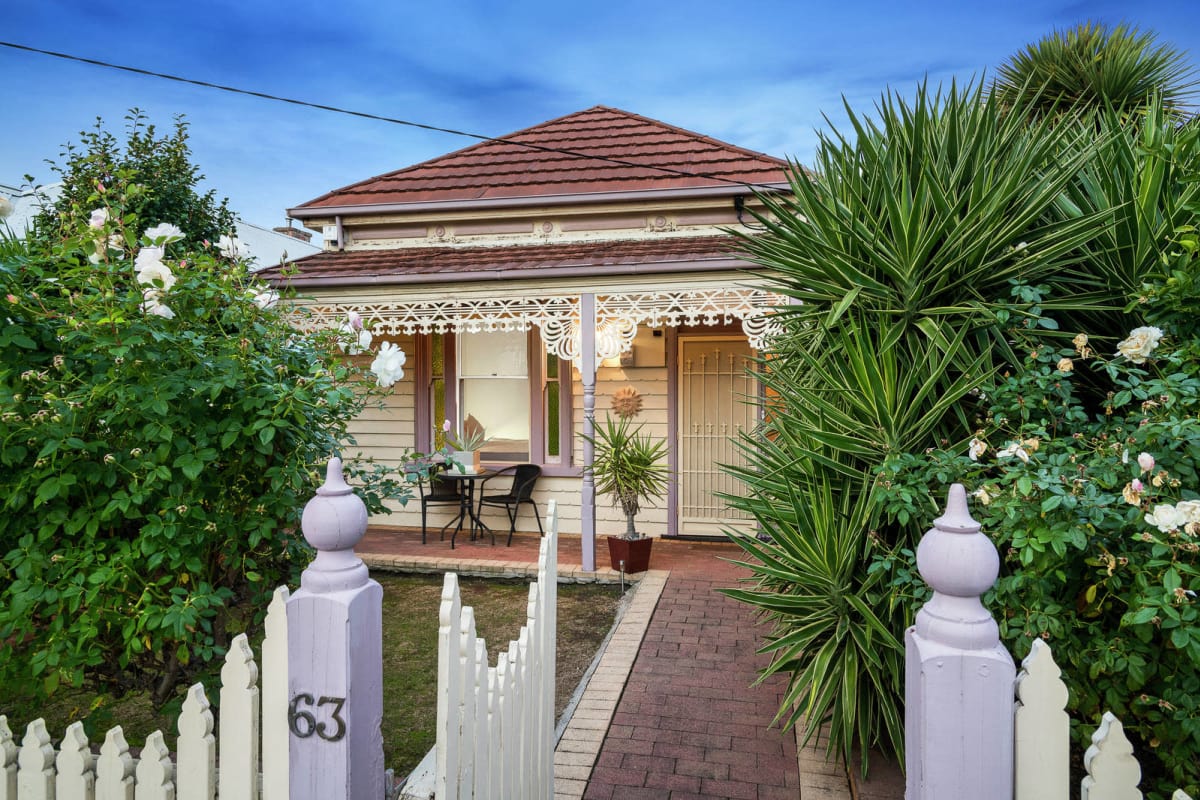Who wouldn’t want to dive into a plunge pool after a long, stressful day? Perfect for cooling off in hot weather or signifying the end of the workday, plunge pools are the ultimate way to invigorate and refresh yourself. But before you rush off to get one, have a think about the different aspects of the pool design, and what you may need to plan for. Doing the prior research could potentially save you a lot of heartache and money later on. Here are some things to consider before you take the plunge.
Topics in this article:
1. Placement for privacy
‘Privacy is always an important part of any pool design,’ says Jason Elboz, director of Space Landscape Designs. In the instance of a sloping block, it’s important that the correct pool height is determined so neighbouring properties are not looking into the pool.
The plunge pool pictured maximised the tight space and achieved privacy by sitting right on the boundary of the house. The rendered block work rising out of the pool acted as the boundary barrier, says Tim Chaichana, a designer from GOODMANORS Pool + Garden.
2. Depth & function
‘Pool depth is all about function,’ says James Dawson, founder of JDLDESIGN. Will young children be swimming in it? Is it for relaxing in, or entertaining? This will determine the depth, style and features of the pool, for example, a plunge pool used frequently by children would generally be shallower and/or have an easy way to exit the pool. Generally, plunge pool depth ranges from about 1.2 to 1.6 metres, but this is not a hard and fast rule.
3. Style
The aesthetic of your plunge pool is an important factor, as any designer will tell you. Dawson notes that the plunge pool pictured was created to echo the contemporary and angular form of the house. ‘In this case, the client had a strong connection with Asia and loved the colour green. I picked up from visiting their home their love for abstract art, and this was the inspiration for the pool shape,’ he says.
Perhaps you’ll want to add plants or crawling vines to the surrounding walls too – they can add appeal and increase privacy. Search for more plunge pool inspiration, and share your favourites with your designer.
4. Shape
The shape of your plunge pool may be confined to the boundaries of the house, or the space available may allow for more creative shapes. It’s best to consult with a professional, who will understand the space you are working with and guide you through your different options.
5. Sunken or raised
Choosing to get a raised or sunken plunge pool is dependant on the look you want to achieve, and how it will fit into the rest of the space. But it can also be determined by budget constraints, and the foundation you’re placing the pool in.
Raised pools are cheaper, due to less excavation costs, says Dawson. Raised walls can also be used as a pool safety barrier, but this varies according to your municipality, he adds. Sunken pools, however, can allow for better visual connection with the water.
The clients’ brief of the pictured plunge pool was to have the pool as the centre of the area, with ‘a modern design with irregular shapes’, says Elboz. The small deck off the house has a view over the pool and a large bluestone paving area at the rear means you can see the pool from any angle.
6. Soil structure
It’s best to get the soil tested before getting a plunge pool, as it will help the builder to determine how much rock there is to excavate and add an allowance for this in the contract. This is an essential move for avoiding any nasty financial surprises.
7. Extra features
There are numerous features available to enhance your plunge pool: make your plunge pool extra calming by adding a beautiful water feature, get out of it easier by adding a step, or heat it so it can be used in winter. You may even want to look into a plunge pool that doubles as an outdoor spa.
Chaichana also notes the importance of taking lighting into consideration to add atmosphere and extend the area’s usage into the evening. Whatever extra features you decide on, make sure you and your designer have agreed before the build begins and the price has been set.
8. Decking & fencing
Decide what materials you want to use for the decking and fencing around the pool – natural or otherwise. Deciding on this in advance will help make a seamless connection between the plunge pool and your home.
In terms of practical considerations, you’ll need to think about the impact pool chemicals will have on timber if that is your material of choice. ‘This is generally not a problem if you choose a suitable hardwood, avoid oiling it and allow the timber to silver off naturally,’ Dawson says.
As for fencing, if it is used as a pool safety barrier, it needs to be compliant under the local building regulations. Traditional pool fencing can be costly, so this is where a good designer can become a little inventive and suggest taking a more sculptural approach to the barrier. ‘For example, a line of feature grade timber posts set in a concrete footing can act as a visual feature and a compliant pool barrier,’ Dawson adds.
9. Rules & regulations
Pool fencing requirements vary from state to state in Australia, so it’s best to contact your local government authority to discern the specifics of the regulations before proceeding. In NSW, as of 2010, all pools built must be surrounded by a fence that separates the pool from the house. In Queensland, different rules apply depending on whether you are buying, selling or renting a property with a pool.
10. Indoors or outdoors
Have you considered an indoor plunge pool? It could make good use of unusual or extra space, or be located conveniently near a home gym to cool off after a hard workout.
This article was originally published on Houzz.com.au. Read the original article here.
For more pool inspiration and advice take a look at these seven tips for successful pool design, the best pool designs for small spaces and the things to consider before installing a pool.
Written by:
Melissa Cowan is a Houzz contributor. She is a lover of boho, Scandi and mid-century style.












